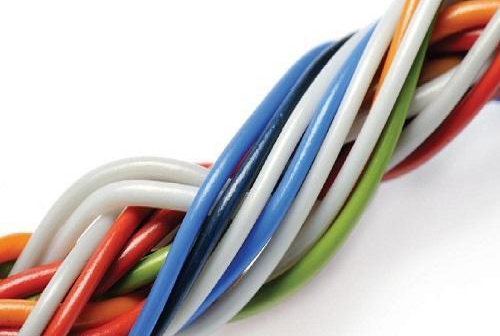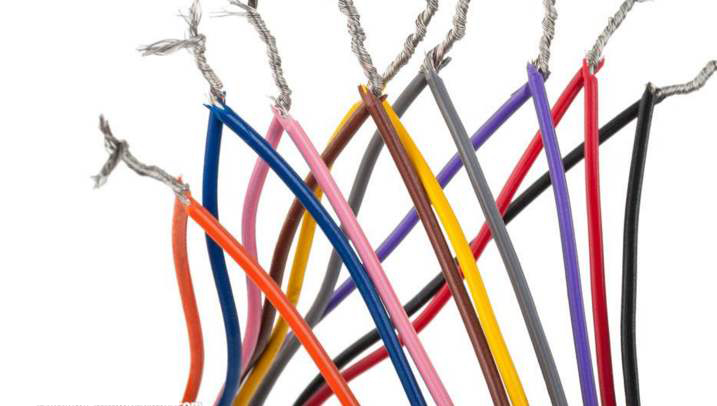How to prevent wires and cables from catching fire due to overload of wires?
During the operation of the wire and cable, it will generate heat due to the existence of resistance. The resistance of the wire is generally very small, and its heating power can be expressed by the formula q=I^2R. q=I^2R indicates: for a piece of wire in actual use (R is basically constant), the larger the current passing through the wire, the greater the heating power; if the current is constant, the heating power of the wire is also constant . The heat released during operation will be absorbed by the wire itself and cause the temperature of the wire to rise. Although the wire is constantly absorbing the heat released by current work, its temperature will not rise indefinitely.
Because the wire is constantly radiating heat to the outside while absorbing heat, the facts show that the temperature gradually rises after the wire is energized, and finally the temperature is constant at a certain point. At this constant point, the wire has the same heat absorption and heat dissipation power, and the wire is in a thermal equilibrium state. The ability of the wire to withstand higher temperature operation is limited, and operation exceeding a certain maximum temperature will be dangerous. This maximum temperature naturally corresponds to a certain maximum current, and running a wire that exceeds this maximum current is an overload. The overload of the wire directly causes the temperature of the wire itself and nearby objects to increase. Temperature rise is the most direct cause of this type of fire.
Overload damages the insulation layer between the twin wires and causes a short circuit, which burns down the equipment and causes a fire. The double-stranded wires are separated by the insulating layer between them, and the overload will soften and destroy the insulating layer, which will cause the two-stranded wires to directly contact and cause a short circuit and burn the equipment. At the same time, the high temperature generated by the large current at the moment of short-circuit causes the line to catch fire and fuse, and the resulting molten beads fall to combustible materials to cause a fire. Overload temperature rise can also directly ignite nearby combustibles. The heat transfer of the overloaded wire increases the temperature of nearby combustibles. For nearby combustibles with low ignition point, it is possible to ignite them and cause a fire. This danger is particularly prominent in warehouses for storing flammable materials and buildings that are easy to use and combustible decorations.
Overload also causes the connections in the circuit to be overheated, which accelerates the oxidation process. Oxidation produces a thin layer of oxide film that is not easy to conduct electricity at the connection points. The oxide film increases the resistance between the contact points, resulting in ignition and other phenomena, causing a fire.
So, how to prevent fire due to wire and cable overload?
1. During the circuit design process, the capacity of the site should be accurately verified, and the possibility of adding capacity in the future should be fully considered, and the appropriate type of conductor should be selected. For large capacity, thicker wires should be selected. Circuit design and reasonable selection are key steps to prevent overload. If the design is not properly selected, it will leave inherent hidden dangers that are difficult to rectify. Some small projects and places are not carefully designed and selected. It is very dangerous to choose and lay lines at will. New electrical appliances and electrical equipment should fully consider the capacity of the original lines. If the original line does not meet the requirements, it should be redesigned and modified.
2. The line should be constructed and laid by qualified electricians in accordance with relevant specifications. The wiring conditions directly affect the heat dissipation of the wires. Generally speaking, the wiring should not pass through flammable and combustible materials and stacks, which will cause poor heat dissipation of the wires, heat accumulation, and the possibility of igniting the surrounding combustible materials, which increases the risk of fire under overload conditions; Lines laid in the decoration ceiling of public entertainment places should be protected by steel pipes to separate the ceiling from the lines. Even if there are molten beads in overload, short circuit, etc., they will not fall to avoid fire.
3. Strengthen power management, avoid random wiring and wiring, and use mobile sockets with caution. Random wiring, random wiring, and use of mobile sockets are actually adding electrical equipment to a certain section of the line, which increases the amount of current and may cause overload. There are obviously more mobile socket jacks than fixed wall sockets. If too many electrical equipment are used on the mobile sockets, the original wiring must be unbearable. For larger power equipment and electrical appliances, separate lines should be provided, and mobile sockets should not be used as wiring sources.
4. Speed up the renewal and transformation of old lines to eliminate fire hazards. Old enterprises, old residential areas and other units have been used for a long time, and many lines have been aging and have exceeded the service life. Even if the current-carrying capacity of some lines is not large, the aging circuit can hardly bear such current-carrying capacity, and it also has the danger of overload. Especially in old residential areas, the lines have long been aging, but with the improvement of people’s living standards and the increase of household appliances, their electricity consumption is still rising year by year, which is really worse. For old lines, timely supervision and coordination should be carried out, and rectification should be promoted as soon as possible to eliminate fire hazards and ensure safety.

